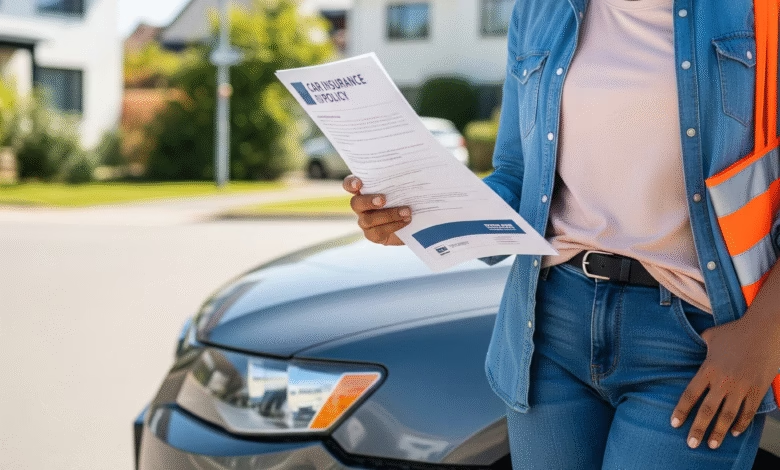How to choose the best insurance policy for your car
Complete guide to help you choose the best insurance for your car

Navigating the world of car insurance can feel overwhelming. With so many options, companies, and confusing terms, it’s easy to get lost. However, choosing the right policy is one of the most important financial decisions you can make as a car owner. The right insurance can protect you from huge financial losses after an accident, theft, or natural disaster.
In this comprehensive guide, we’ll break down everything you need to know about car insurance. We’ll cover the essential types of coverage, explain how to compare quotes, and give you the tools to find the perfect policy that fits your needs and budget. Whether you’re a first-time car owner or looking to switch providers, this article will help you make a smart, informed decision.
Understanding Car Insurance: The Basic Types of Coverage

Before you can choose a policy, you need to understand the different types of car insurance coverage. Most policies are a combination of several types, designed to protect you in various scenarios.
Liability Coverage: The Foundation of Your Policy
Liability insurance is the most basic type of coverage and is required in most states. It covers the costs of injuries and property damage you cause to others in an at-fault accident. It’s split into two parts:
- Bodily Injury Liability: This pays for medical expenses, lost wages, and pain and suffering for the other party if you’re at fault.
- Property Damage Liability: This covers the costs of repairing or replacing the other person’s vehicle or property (like a fence or building) that you damage in an accident.
Collision Coverage: Protecting Your Own Vehicle
Collision coverage pays for the repair or replacement of your own vehicle after an accident, regardless of who is at fault. It’s not legally required, but it’s highly recommended if you have a new or valuable car. Without it, you’d be responsible for all your own car repair costs after an at-fault accident.
Comprehensive Coverage: Protection Against Non-Collision Damage
Comprehensive insurance covers damage to your vehicle that is not caused by a collision. This includes a wide range of events such as:
- Theft or vandalism
- Damage from fire, floods, or other natural disasters
- Falling objects, like a tree branch or hail
- Damage from hitting an animal
Like collision coverage, this is an optional but crucial type of protection for many drivers.
Personal Injury Protection (PIP) and Medical Payments (MedPay)
These cover medical expenses for you and your passengers after an accident, regardless of who is at fault. PIP is more comprehensive and can also cover lost wages and rehabilitation costs. MedPay is more limited and generally only covers medical and funeral expenses. The availability and requirement of these vary by state.
Uninsured/Underinsured Motorist Coverage
This coverage protects you if you’re in an accident with a driver who either has no insurance (uninsured) or not enough insurance to cover your costs (underinsured). It can cover your medical bills and, in some cases, your car repair costs. This is an essential protection in many states where a significant number of drivers don’t carry adequate insurance.
Key Factors That Impact Your Car Insurance Rates

The cost of your car insurance premium isn’t random. Insurance companies use a variety of factors to determine how much you’ll pay. Understanding these can help you lower your rates.
Your Driving Record
This is one of the most significant factors. A clean driving record with no accidents or traffic violations will result in lower rates. A history of speeding tickets, DUIs, or at-fault accidents will significantly increase your premium.
Your Vehicle’s Make and Model
The type of car you drive has a huge impact on your insurance rate. Insurers look at:
- Vehicle Cost: More expensive cars cost more to repair or replace, leading to higher premiums.
- Safety Features: Cars with advanced safety features (e.g., anti-lock brakes, airbags) may get a discount.
- Theft Risk: Some models are more frequently stolen, which can increase your rates.
- Repair Costs: Cars with expensive parts or specialized mechanics will have higher premiums.
Your Personal Information
Insurers also consider your personal details, including:
- Age and Gender: Younger drivers, especially males, typically pay more due to a higher statistical risk of accidents.
- Location: Living in a densely populated area with high crime rates or traffic will lead to higher rates than in a rural area.
- Credit Score: In many states, a good credit score is linked to a lower risk of filing claims, which can lead to lower premiums.
- Marital Status: Married drivers often get better rates.
Your Coverage Choices
The choices you make about your policy, such as your deductible and coverage limits, also directly affect your premium.
- Deductible: This is the amount you pay out of pocket before your insurance coverage kicks in. A higher deductible will lower your premium, but you’ll have to pay more yourself if you file a claim.
- Coverage Limits: The maximum amount your insurance will pay for a claim. Higher limits provide more protection but also increase your premium.
How to Find the Best Car Insurance Policy: A Step-by-Step Guide
Now that you understand the basics, let’s walk through the process of choosing the best policy for you.
Step 1: Evaluate Your Needs and Budget
Before you start getting quotes, figure out what you truly need.
- What are the minimum requirements in your state? Make sure any policy you consider meets or exceeds the legal minimums.
- How old is your car? If you have an older, less valuable car, you might consider dropping collision and comprehensive coverage to save money. If you have a brand-new car, you’ll want full coverage.
- What can you afford for a premium and deductible? Be realistic about your budget. A low premium with a high deductible might be tempting, but can you really afford to pay that deductible if you have an accident?
Step 2: Shop Around and Compare Quotes
This is the most crucial step. Don’t just stick with your current provider or the first company you see.
- Get quotes from multiple companies: Use online comparison tools or work with an independent insurance agent who can provide quotes from a variety of insurers.
- Look beyond the price: A low premium isn’t always the best deal. Compare the coverage details, deductibles, and customer service reviews of each company.
- Inquire about discounts: Ask about every possible discount. Many companies offer discounts for:
- Bundling policies: Combining your car and home insurance with the same provider.
- Good student discounts: For young drivers with good grades.
- Safe driver discounts: For having a clean driving record over a certain period.
- Vehicle safety features: For cars with features like anti-theft systems or airbags.
- Low mileage: If you don’t drive your car very often.
Step 3: Read the Fine Print
Once you have a few good options, take the time to read the policy documents carefully. Look for:
- Exclusions: What is not covered by the policy? Make sure there are no surprises.
- Deductibles: Reconfirm the deductible amount for each type of coverage.
- Claim Process: Understand how to file a claim and what the process is like. Check online reviews to see how well the company handles claims.
- Cancellation Fees: Some policies have fees for early cancellation.
Step 4: Make Your Decision and Purchase the Policy
After you’ve done your research, you’ll be able to confidently choose the best policy for your needs. Finalize the details, pay your first premium, and you’re good to go. Remember to cancel your old policy if you’re switching providers.
The Bottom Line: Your Car, Your Protection

Choosing the right car insurance policy doesn’t have to be a guessing game. By understanding the different types of coverage, recognizing the factors that affect your rates, and taking the time to shop around, you can find a policy that provides excellent protection without breaking the bank. Your car is a significant investment, and having the right insurance ensures it—and your financial future—are well-protected.





